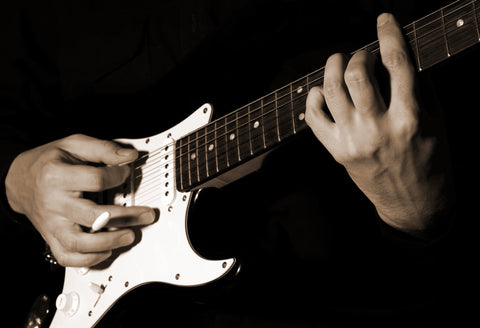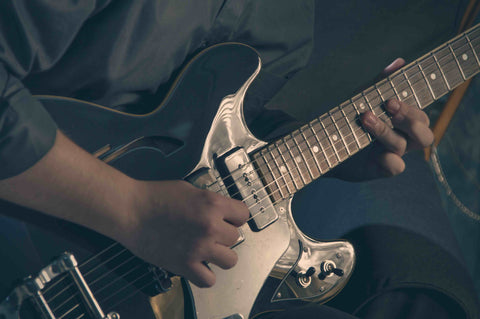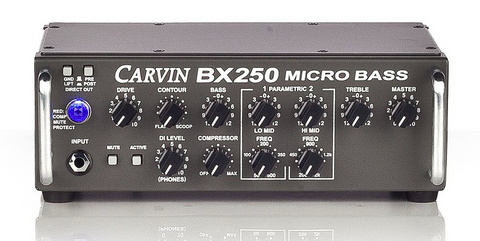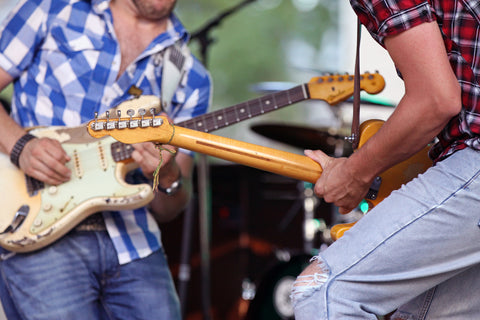-
Audio
-
Guitar
- Bass
-
Blog
-
SALE
- Financing
- Support
- SINCE 1946
January 06, 2017

As we concluded Part 1 of this series, we were looking at different areas you might want to include in your rehearsal plan. Let’s look at some more focus points:
Efficiency – Steve Lukather was one of my favorite players when I was a kid. When he played fast it was like something exploded inside him! But he still had incredible control of his phrasing and his bends sounded like they were crying. One night at an LA showcase gig, I was lucky enough to be invited to play in a group jam at the end of the night, right there on the same stage with Steve! Paying close attention as he began to solo, I immediately realized he was using some kind of magic- his fingers didn’t even move!
December 30, 2016

Admit it, I caught you looking. Even though some part of your musician’s mind probably was screaming, “There are no ‘shortcuts’ to becoming a virtuoso!” And your musician’s mind was right, at least to the extent that there are no shortcuts. But if you find yourself “stuck in a rut” as a teacher friend of mine used to say, you might need to revisit the basics of your practice routine and make some adjustments.
December 05, 2016

Imagine if our amps could talk- there would be a lot less incidents of blown speakers and mismatched impedances! While no one- even the most experienced guitar techs- can immediately determine exactly what caused an amplifier to fail without taking a look under the hood, some units do give off warning signs that there is something wrong to prevent that costly replacement or trip to the repair shop. Naturally, if you are really familiar with your amp, then chances are you know when it’s being pushed past its limits or set up incorrectly. But what happens if one day you’re not paying close enough attention or using a different setup? Today, we are going to discuss an overlooked, unsung hero of your amp- the protect light. Chances are you know it’s there, but you may have never seen it come on, or you have and you’re wondering what it’s trying to tell you.
December 01, 2016

Maybe “dating” is the wrong word but then again, most musicians develop a very close bond with their equipment. There are some significant advantages we gain as we become intimately familiar with a guitar amp and discover the settings that make it come alive for us. But sometimes you may find the need to learn your way around a new amp quickly; occasionally you might want to evaluate a purchase, get to know an amplifier you just bought, or are asked to play a show where the amplifiers are ‘backlined’ or provided (and you can’t control what they give you to play through). Whatever the reason you find yourself in new territory, a simple method many amp techs use can be very useful in “finding the sweet-spot” quickly on any guitar amp.
November 18, 2016

Whether you are a professional musician, an aspiring student or someone who plays for fun, chances are that sooner or later you’ll want to find a gig. Perhaps you were invited to play a top venue or you were called to fill in for a pro band for the first time. Maybe you were asked to play for a friend’s wedding or lead worship for your congregation at church. Wherever you are invited to play there is always one thing that most gigs have in common: you’re expected to show up ready to play.
November 17, 2016
In addition to the ever-popular guitar/bass/drum/vocals format, many modern bands have members that double up on keyboards for a few songs, or who exclusively play the keys. The electronic keyboard is a full-range instrument that can really fill up a lot of space, and in the case of synthesizer keyboard, cover an amazingly wide range of sounds. As such, an amplifier that faithfully reproduces its entire frequency range is essential.
November 10, 2016
Buying a new amp for your guitar or bass can be one of the most exciting parts of your musical experience. New sounds and options can promise new inspirations. So when you do get the opportunity to pick out a new amp it isn’t unusual to find yourself rushing home to try it out. Unfortunately we sometimes realize later on down the road that we’ve overlooked something important we should have thought through when we went shopping. In order to make sure you get the right tool for the job, stop and think about some of the following considerations.
November 08, 2016
Delivering a face melting guitar solo isn’t just about pulling it off, it’s also about making sure that your guitar sound comes through loud and clear to really let your playing shine. Oftentimes, the tone you dialed in for a nice crunchy rhythm guitar just doesn’t translate to a searing lead tone. While it may be simply an issue of volume in some cases, it may be that you need a significantly different sound for your solo to cut through. To avoid playing the most rocking solo of your life with no one in the audience actually hearing it, try these tips.
November 03, 2016
Live sound technicians at music venues generally use two main methods of running electric guitar and bass guitar through the PA system: Miking up a cabinet, or running a DI (direct injection) from the amplifier head or a dedicated DI box (or direct box). While guitar cabs are more commonly miked up and bass amps DI’ed, either method can work for both instruments depending on the situation, the style of music, and the player’s equipment. This article will give a basic rundown of both methods and help you decide which will work for you, whether you’re a soundman or on the stage performing.
October 27, 2016
Have you ever had to play a gig with an amp that’s completely unsuited for the job? If so, don’t worry- it happens to the best of us, and despite our better judgment. Maybe the sound guy said that an amp will be back lined, only for you to find that it does not have nearly enough power to hang with your band. Or maybe another band on the bill is providing the equipment, but that equipment only works well for them. Or maybe it’s even your fault and you underestimated the amount of rig you would need for the show! Whatever the circumstance, it always helps to have a backup plan if you have to play on a big stage with a small amp. Here are some tips to survive this gigging situation with your sanity (and the amp) intact.
October 12, 2016
Going into the studio can be an exciting endeavor, whether you are recording your own music or doing session work. To make sure your recording session goes as smoothly as possible, it’s important to take some time beforehand to make sure your guitar is working properly and ready to lay down tracks the minute you set foot in the studio.
October 11, 2016
Getting a good guitar tone in the studio can be a different beast than dialing in your tone in a live setting. While some guitarists use the same amp setup for the studio and stage without issue, some prefer to switch it up and record with different gear.
Sign up to get the latest on sales, new releases and more…
NoFraud Frequently Asked Questions
"Make a joyful noise unto the Lord all of the earth; make a loud noise and rejoice and sing praises. Sing to the Lord with the harp and the voice of the psalm." - Psalm 98:4-5
© 2025 Carvin Audio.
Carvin Corp.
POS and Ecommerce by Shopify
